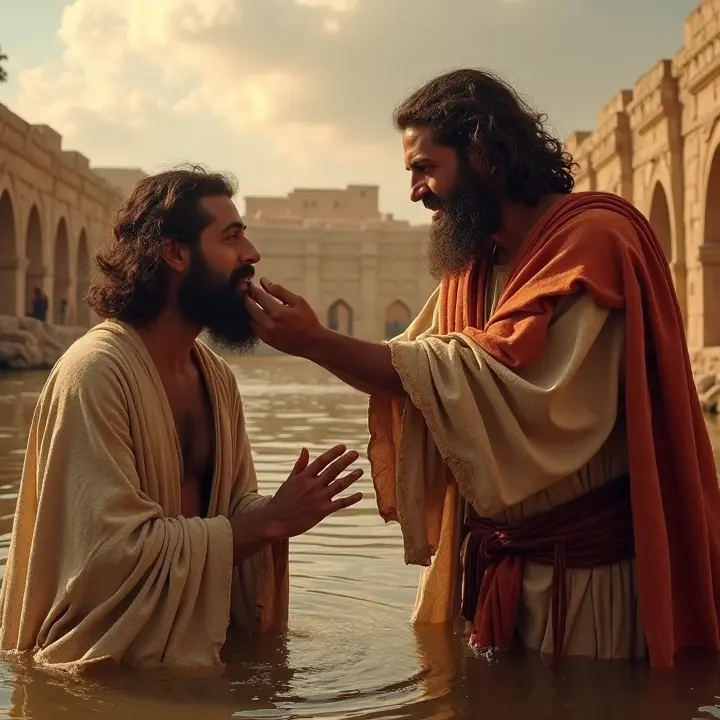In the rich tapestry of the Bible, stories of faith are woven like golden threads, illuminating the path of spiritual enlightenment. One such story, often overlooked yet profoundly impactful, is the account of the blind man whose faith moved mountains. This narrative, found in the Gospels, is not merely a tale of physical healing but a profound lesson on the power of unwavering faith.
The story unfolds in the region of Bethsaida, a small village by the Sea of Galilee. Jesus, the Son of God, had been traveling through Galilee, preaching the Kingdom of God and performing miracles that left the people in awe. It was during one of these journeys that He encountered a man who had been blind from birth. The disciples, ever curious and seeking theological explanations, asked Jesus, ¡°Rabbi, who sinned, this man or his parents, that he was born blind?¡± Their question reflected the common belief of the time that suffering was a direct result of sin. However, Jesus responded, ¡°Neither this man nor his parents sinned; he was born blind so that God’s works might be revealed in him.¡± This statement shattered the prevailing notion of retributive justice and laid the foundation for a deeper understanding of God’s purpose in human suffering.
Jesus then proceeded to heal the blind man. He spat on the ground, made mud with the saliva, and applied it to the man’s eyes. He instructed the man, ¡°Go, wash in the Pool of Siloam¡± (which means Sent). The man obeyed, went and washed, and came back seeing. This act of obedience was not just a simple task; it was a leap of faith. The blind man, despite his lifelong inability to see, trusted in the words of Jesus. He did not question the method or the logic behind it; he simply believed and acted on that belief.
The healing of the blind man set off a series of events that highlighted the stark contrast between faith and unbelief. The Pharisees, the religious leaders of the time, were skeptical and hostile. They interrogated the man, seeking to discredit Jesus. They accused him of being a sinner, born in sin, and therefore unworthy of such a miracle. Yet, the man, now able to see both physically and spiritually, responded with remarkable clarity and courage. He said, ¡°One thing I do know, that though I was blind, now I see.¡± His simple yet powerful testimony confounded the Pharisees, who were more concerned with maintaining their religious authority than recognizing the truth.
The story of the blind man is a powerful illustration of faith in action. His faith was not based on sight or logic but on trust in the divine. He did not need to understand the mechanics of the miracle; he simply believed in the One who performed it. This faith was not passive but active, demonstrated through his obedience to Jesus’ command. His journey from blindness to sight symbolizes the spiritual awakening that comes through faith. Just as he was able to see the world around him for the first time, so too can faith open our eyes to the wonders of God’s Kingdom.
Moreover, the blind man’s story challenges us to examine our own faith. Do we, like the Pharisees, rely on our own understanding and reject what we cannot comprehend? Or do we, like the blind man, trust in the divine even when we cannot see the full picture? Faith, as demonstrated by the blind man, is not about having all the answers but about trusting in the One who has all the answers.
In the broader context of the Bible, this story is part of a larger narrative of faith. From Abraham, who believed in God’s promise of a son despite his old age, to Moses, who led the Israelites out of Egypt through faith in God’s deliverance, to the woman with the issue of blood who touched the hem of Jesus’ garment in faith, the Bible is filled with stories of individuals who trusted in God’s power and goodness. Each of these stories, like the story of the blind man, teaches us that faith is not a blind leap into the unknown but a confident step into the presence of a loving and almighty God.
In conclusion, the story of the blind man in the Bible is a timeless reminder of the power of faith. It shows us that faith can move mountains, heal the sick, and transform lives. It reminds us that true faith is not about seeing with our eyes but about seeing with our hearts. As we navigate the complexities of life, may we, like the blind man, trust in the divine, obey His commands, and allow our faith to illuminate the path before us. For in faith, we find not only physical sight but spiritual vision, and in spiritual vision, we see the glory of God.

